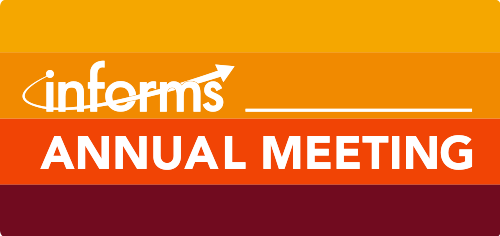Join the conference exhibitors as they discuss innovations and best practices in the field. Professional Development Units (PDUs) are available to those who attend these sessions. All attendees are welcome to join during the scheduled time.
Dates, Times, and Descriptions Below
Check back frequently, new tutorials will be added as they are scheduled.
Sunday, October 15
Time:
8-8:35am
Location:
CC-North 120 D

Boston University Metropolitan College: Analytics Programs in Business, Data Science, Supply Chain, and Healthcare
Presented by: Vladi Zlatev, Canan Corlu, Krystie Dickson, and Putranegara Riauwindu
Time:
8:40-9:15am
Location:
CC-North 120 D
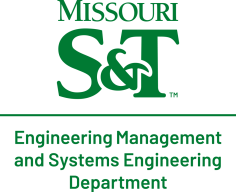
AI-enabled Models to Assist and Optimize the Decision-making Process in the Kidney Transplantation Network
Presented by: Cihan Dagli
Discover the game-changing potential of AI-powered models in optimizing the decision-making process for deceased donor kidney transplantation. Unleash the power of advanced deep learning techniques to revolutionize patient care with streamlined processes. Experience the real-time identification of key features that can confidently leverage decision-making and significantly reduce the non-utilization of deceased donor kidneys. Join us in embracing the future of healthcare with AI-powered models.
Time:
10:45-11:20am
Location:
CC-North 120 D

The New OROps: Build More Decision Models, not More Decision Tools
Presented by: Sebastián Quintero
Decision models save money. Decision tools save time. For decades, realizing business value from decision algorithms and operations research has often been hindered by the challenges with model definition, solver setup, testing, deployment, and collaboration. It’s time for decision optimization technology to get out of its own way. Inspired by MLOps and software development approaches, a new platform is providing collaborative, opinionated tooling that empowers teams to move faster with less confusion and more access to the decision technology ecosystem. In this tech tutorial, we’ll explore these tools and workflows and their impact on accelerating algorithm development cycles from months to weeks or less.
Time:
11:25am-12noon
Location:
CC-North 120 D

JD.com Uses Advanced Analytics to Enhance Supply Chain Capability
Presented by: Zuojun (Max) Shen
Supply chain leaders have continuously tried to expand and enhance capabilities by using advanced techniques and analytics. JD.com, the largest retailer in China based on revenue, is committed to an intelligent, integrated, and resilient supply chain that creates value for all players within the retail ecosystem. Despite challenges in the complex and sophisticated retail supply chain, JD.com has strengthened its supply chain agility, and attained shared value by focusing on supply chain efficiency, supply chain resilience, and reducing supply chain uncertainty and volatility. This presentation will help you uncover more supply chain capabilities using advanced techniques with real-world cases adopted by JD.com.
Time:
2:15-2:50pm
Location:
CC-North 120 D

The Best of Both Worlds – Integrating Python and GAMS
Presented by: Atharv Bhosekar
Optimization applications combine technology and expertise from many different areas, including model-building, algorithms, and data-handling. Often, the gathering, pre/post-processing, and visualization of the data is done by a diverse organization-spanning group that shares a common bond: their skill in and appreciation for Python and the vast array of available packages it provides. For this reason, GAMS offers multiple ways to integrate with Python on the data-handling side, as well as offering some packages of our own (e.g. GAMS Transfer, GAMS Connect). In this talk, we will explore the benefits of this integration and demonstrate them using a real-world example complete with results on performance.
Time:
2:55-3:30pm
Location:
CC-North 120 D

Improved Industrial MIP Capabilities with Callback and Tuner
Presented by: Tiancheng Zhang
In this presentation, the speaker will give a brief introduction to the capabilities and functionalities of the latest COPT release, including problem types, APIs to modelling and programming languages, deployment options, etc. The speaker will also run live demos of COPT’s advanced features, including callback and tuner, to show how it improves MIP performance in real-world use cases.
Time:
4:40-5:15pm
Location:
CC-North 120 D

Powering Complex Data Projects with DataRefiner’s Topological Data Analysis
Presented by: Edward Kibardin
Discover how Topological Data Analysis (TDA) can be used in complex data analysis projects such as cyber security, aircraft engine analysis, fraud detection, and autonomous vehicles. Observe data connections via causal discovery and uncover distinct clusters exhibiting unforeseen patterns through the utilization of the DataRefiner platform. This talk will equip attendees with practical knowledge of how TDA can help discover novel patterns in their areas of interest.
Monday, October 16
Time:
8:00-8:35am
Location:
CC-North 120 D

Machine Learning in Text Analytics: Do We Really Need Deep Learning?
Presented by: Normand Peladeau
The renewed enthusiasm for artificial intelligence (A.I.) and, more particularly, for techniques based on deep learning and other forms of neural networks, means that we are trying to apply these latest techniques to all problems requiring a supervised or unsupervised form of learning. But this unprecedented wave of interest often makes us forget there are other forms of machine learning that have proven themselves over time. During this presentation we will compare certain forms of machine learning with and without the contribution of neural network techniques in order to assess the importance and the nature of a possible contribution (if any). To do this, we will examine different tasks in the field of automatic language processing, namely topic modeling, automatic word disambiguation, and the development of semantic lexicons. We will also try to identify in which context an approach based on neural networks or deep learning deserves consideration.
Time:
8:40-9:15am
Location:
CC-North 120 D

Spatial Branch and Bound Support for General Nonlinear Functions in Gurobi 11.0
Presented by: Ed Klotz
In this tutorial, attendees will get a first look at the additional support for nonlinear functions available in Gurobi 11.0. Previous versions of Gurobi supported a set of frequently used general nonlinear functions through piecewise linear approximation. Gurobi 11.0 extends the spatial branch and bound algorithm that supported nonconvex quadratic constraints and objectives starting with version 9.0 to handle more general nonlinear constraints and objectives, including higher degree polynomial, logarithmic, exponential and trigonometric functions. This tutorial will discuss how to extend the McCormick relaxation used in the spatial branch and bound to these more general nonlinear functions, and the resulting implications regarding how to get good performance.
Time:
10:45–11:20am
Location:
CC-North 120 D

Nonlinear Optimization Using Artelys Knitro
Presented by: Richard Waltz
Artelys Knitro is a leading solver focused on large-scale, nonlinear (potentially non-convex), optimization problems. Knitro offers both interior-point and active-set algorithms for continuous models, as well as tools for handling problems with integer variables and other discrete structures. This tutorial will introduce the key features of Knitro and demonstrate how to use Knitro to model and solve an optimization problem from within the python environment by working through a real-world application in the energy industry. We will also highlight some of the latest developments in Knitro, focusing on some of the recent advances in solving mixed-integer nonlinear problems, and heuristics for finding global (or improved local) solutions for non-convex problems.
Time:
11:25am–noon
Location:
CC-North 120 D

Optimizing Hydropower and Reservoir Management: Advanced Modeling and Strategic Optimization
Presented by: Carlyle Deligny
With 15,300 MW of installed capacity in 8 countries and 85% of hydropower capacity, Brookfield Renewable is one of the biggest hydropower producers worldwide. Artelys has worked closely with Brookfield Renewable to model and optimize the operations of 2 of their major hydropower plants (650 MW of installed capacity in Pennsylvania, USA). The objective was to develop a software solution to model hydropower plant operations. Artelys carried out a study that led to around 10% potential gain in the annual generated revenue and implemented a software solution based on Artelys Crystal Energy Planner to optimize short-term schedules for the 2 hydropower plants. Using Artelys Crystal Energy Planner, Artelys modelled the Brookfield Renewable system considering all specific operational and market-related constraints to take advantage of all the sources of flexibility to automatically generate reliable least cost production schedules.
This customized solution uses a powerful optimization engine to assist hydropower producers in maximizing their generation benefit while taking into account all specific operational, environmental, and market-related constraints. The objective of the presentation is to present the solution, with a focus on the steps taken to integrate these powerful algorithms into an operational scheduling process.
Time:
2:15-2:50pm
Location:
CC-North 120 D

Littlefield 2.0 — a new version of the online game for Operations Management courses
Presented by: Samuel Wood
After 24 years there is a new version of Littlefield! Littlefield is a competitive online simulation of either a factory or a medical laboratory that has been by more than half a million students in 500+ universities in 60+ countries to excite and engage students in operations management topics like process analysis and inventory control. This presentation will introduce a newly updated version 2 of the game that will go into production in 2024.
Time:
2:55-3:30pm
Location:
CC-North 120 D

End-to-End FICO® Xpress Insight Tutorial: From Data to Decisions for Non-Technical Business Users
Presented by: Jeff Day
You have a team with a great analytics background. They’ve developed advanced analytical tools using Python, R, or your current optimization solver. They’ve derived crucial insights from your data and figured out how your decisions shape your customers’ behaviors. Now it’s time to put these critical analytical insights into the hands of your non-technical business users.
In this tutorial, you’ll learn how FICO’s Xpress Optimization solutions (including Xpress Mosel, Xpress Workbench, Xpress Solver and Xpress Insight) make it possible to embed your analytic models in business user-friendly applications. See how to supercharge your analytic models with simulation, optimization, reporting, what-if analysis, and agile extensibility for your ever-changing business. Plus, you’ll discover how to use the new View Designer to reduce GUI development times from minutes to seconds.
Time:
4-4:35pm
Location:
CC-North 120 D

Unleash the Future: AI-Powered Insights and Services for Researchers and Authors
Presented by: Janina Krieger
🔍 AI Unveiled: Discover the magic behind AI technology and how it’s transforming the landscape of research and writing. Gain insights into the latest advancements that are reshaping the way we approach academic exploration.
📚 AI as your Research Partner: Imagine having an AI collaborator that helps you navigate the sea of information effortlessly. Learn how AI can assist researchers in sifting through vast datasets, identifying trends, and generating valuable hypotheses, propelling your research to new heights.
🌐 Global Collaboration: Uncover the potential of AI in bridging geographical gaps and fostering cross-border collaboration. Explore our AI-powered translation tool that enable seamless communication and idea exchange among researchers and authors from around the world.
🚀 Future Forward: Get a sneak peek into the future of AI and its evolving role in research and writing. Gain a visionary perspective on how AI might redefine creativity, innovation, and knowledge dissemination in the years to come.
Time:
4:40-5:15pm
Location:
CC-North 120 D
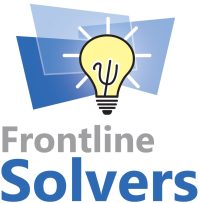
Automated Risk Analysis of Machine Learning Models: A Novel Approach
Presented by: Daniel Fylstra
See a new approach to risk analysis of machine learning models in action in this tutorial session. We’ll explain why the traditional machine learning approach – training a model on a data set, validating it on another data set, and testing it (or comparing it to other models) on a third data set isn’t “risk analysis” – and isn’t sufficient to assess or quantify the risk that the model will perform differently than expected when deployed for production use, with disappointing or even costly business consequences. We’ll discuss the complexity and time required to apply conventional risk analysis during machine learning model development. And we’ll demonstrate a new, patent-pending approach that automates and integrates simulation-based risk analysis into the machine learning development process. As a side benefit, we’ll show a new, fully automated approach to synthetic data generation, with many potential uses, and a novel use of such synthetic data in risk analysis. As time permits, we’ll demonstrate use of these methods in our cloud platform RASON®, in Excel with Analytic Solver®, and in your choice of programming languages with Solver SDK®.
Tuesday, October 17
Time:
8:00-8:35am
Location:
CC-North 120 D

CoCalc: Collaborative Calculation and Data Science
Presented by: Blaec Bejarano
A feature overview of the browser-based CoCalc software platform, including collaboratively creating programming scripts and scientific publications, all while leveraging the power of tools like GitHub and Open AI with an integrated stack of your favorite open-source applications/languages and flexible cloud compute resources.
Time:
8:40-9:15am
Location:
CC-North 120 D

Intro to Optimization through the Lens of Data Science – New Gurobi Course Preview
Presented by: Lindsay Montanari and Joel Sokol
Dr. Joel Sokol, with the help of technical team members and experts from Gurobi, has been hard at work developing a new online course introducing optimization through the lens of data science that will be released in late fall 2023! This free course was developed to help teach trained data scientists how to add optimization to their toolbox, and when to use it in their advanced problem solving. We will cover a comprehensive introduction to optimization, how to translate real life problems into optimization, and when optimization is the best tool to solve a problem.
In the course, Dr. Sokol introduces learners to world class tools to help them problem solve and provides everything from basic hands-on exercises to more advanced full real-world use cases to reinforce all new concepts of prescriptive analytics as you learn them. We are looking forward giving you the first preview of what this course includes, how to access it once released, and a look into a new way of teaching mathematical optimization to data science learners with expertise from Dr. Joel Sokol and the team of PhD experts from Gurobi Optimization who helped him develop this comprehensive introduction to mathematical optimization.
Time:
10:45-11:20am
Location:
CC-North 120 D

Techno-Economic Analysis with MATLAB: Analyzing the Impact of EV Charging on the Power Grid
Presented by: Chris Lee and Mil Shastri
With more and more electric vehicles connecting to the power grid every day, there are concerns that existing grid infrastructure will be strained beyond acceptable operational limits. We can address these concerns by bringing operations, pricing, and forecasting into techno-economic models of power systems in MATLAB. Using these models, we can assess feasibility, risk, optimal operations, and profitability of charging infrastructure.
In this tutorial, we consider a scenario where a system operator can command individual electric vehicle battery units to both store and supply electricity while connected to the grid. The operator applies techno-economic optimization in MATLAB to the charging profiles to minimize electricity cost while accounting for system requirements and constraints, such as limits on state of charge, grid supply, and charge/discharge rate. The optimization provides a fast and automated approach for leveraging all of the units connected to the grid for overall system benefit. Charging profiles are then assessed for the impact on voltage and power flow levels using a grid-level simulation.
Time:
11:25-12noon
Location:
CC-North 120 D

Unleash the Future: AI-Powered Insights and Services for Researchers and Authors
Presented by: Janina Krieger
🔍 AI Unveiled: Discover the magic behind AI technology and how it’s transforming the landscape of research and writing. Gain insights into the latest advancements that are reshaping the way we approach academic exploration.
📚 AI as your Research Partner: Imagine having an AI collaborator that helps you navigate the sea of information effortlessly. Learn how AI can assist researchers in sifting through vast datasets, identifying trends, and generating valuable hypotheses, propelling your research to new heights.
🌐 Global Collaboration: Uncover the potential of AI in bridging geographical gaps and fostering cross-border collaboration. Explore our AI-powered translation tool that enable seamless communication and idea exchange among researchers and authors from around the world.
🚀 Future Forward: Get a sneak peek into the future of AI and its evolving role in research and writing. Gain a visionary perspective on how AI might redefine creativity, innovation, and knowledge dissemination in the years to come.
Time:
2:15-2:50pm
Location:
CC-North 120 D
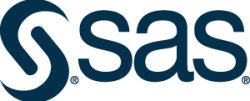
Building and Solving Optimization Models with SAS
Presented by: Rob Pratt
SAS offers extensive analytic capabilities, including machine learning, deep learning, natural language processing, statistical analysis, optimization, and simulation. SAS analytic functionality is also available through the open, cloud-enabled design of SAS® Viya®. You can program in SAS or in other languages – Python, Lua, Java, and R. SAS Analytics is also equipped with AI-enabled automations and modern low-code or no-code user interfaces that democratize data science usage in your organization and offer unparalleled speed to value.
OPTMODEL from SAS provides a powerful and intuitive algebraic optimization modeling language and unified support for building and solving LP, MILP, QP, conic, NLP, constraint programming, network-oriented, and black-box models. This tutorial will include an overview of the optimization capabilities and demonstrate recently added features.
Time:
2:55-3:30pm
Location:
CC-North 120 D

Python and AMPL: Build Prescriptive Analytics applications quickly with Pandas, Colab, Streamlit, and amplpy
Presented by: Filipe Brandão and Robert Fourer
Python and its vast ecosystem are great for data pre-processing, solution analysis, and visualization, but Python’s design as a general-purpose programming language makes it less than ideal for expressing the complex optimization problems typical of OR and prescriptive analytics. AMPL is a declarative language that is designed for describing optimization problems, and that integrates naturally with Python.
In this presentation, you’ll learn how the combination of AMPL modeling with Python environments and tools has made optimization software more natural to use, faster to run, and easier to integrate with enterprise systems. Following a quick introduction to model-based optimization, we will show how AMPL and Python work together in a range of contexts:
- Installing AMPL and solvers as Python packages
- Importing and exporting data naturally from/to Python data structures such as Pandas dataframes
- Developing AMPL model formulations directly in Jupyter notebooks
- Using AMPL and full-featured solvers on Google Colab, with no installation overhead and free access for courses
- Turning Python scripts into prescriptive analytics applications in minutes with amplpy, Pandas, and Streamlit
Time:
4-4:35pm
Location:
CC-North 120 D
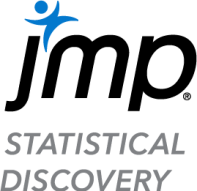
Exploring Unstructured Text Data to Extract Meaning and Sentiment
Presented by: Kevin Potcner
Asking students what data they are most familiar with will inevitably result in the answer: “Text Data.” From social media posts, texting, product and movie reviews, among so many others, this generation of students live in a world of constantly sending, receiving, and looking at unstructured text data.
Requiring no prior experience in the concepts of formal statistical analyses (confidence intervals, p-values, models, etc.), extracting meaning from a large collection of text can be successfully done by a wide range of students including those with just a basic knowledge of data analysis. Due to today’s students being intimately familiar with this type of data, the value of exploring text data to extract meaning is easily appreciated by students, with most finding it quite fun and engaging.
Using JMP statistical software, the presenter will step through examples of analyzing text data in a “No Code” interactive environment.
Time:
4:40-5:15pm
Location:
CC-North 120 D

Multi-Sigma: an Integrated AI Platform of Prediction and Optimization for Multiple Target Objectives Simultaneously
Presented by: Kotaro Kawajiri
AIZOTH provides AI services such as Multi-Sigma, AI consulting, spot support to optimize manufacturing conditions, and commissioned R&D. Multi-Sigma is the cloud-based AI software for R&D to reduce the effort of experiment drastically and also to help researchers finding the innovative solutions for their actual problems with minimum experimental dataset. Multi-Sigma was already introduced by large manufacturing enterprises and top universities. We will demonstrate how a Multi-Sigma can be used with sample datasets.
Key features of Multi-Sigma:
- Numerical analysis using deep learning: Deep learning techniques of both neural network and Bayesian optimization can be used with minimum dataset. High precision prediction of multiple objective variables. Factor analysis using sensitivity analysis for explainable AI. Multi-objective optimization in trade-off (maximization, minimization, target value, tailor-made optimization, constraint of explanatory variables). It can handle a large number of explanatory variables (up to 200) and objective variables (up to 100),
- No-code cloud-based software: Multi-Sigma is the advanced cloud-based AI platform which can be used with no-code on the browser. Anyone can use Multi-Sigma anytime, anywhere, and by any hardware (even by smartphones).
- Innovative Design of Experiment using Artificial Intelligence (AI-DOE): Researchers can utilize our ‘AI-DOE’ techniques easily on Multi-Sigma. AI-DOE is developed by incorporating AI techniques into the traditional DOE basing on statistics. It can guides researchers to find the optimal solution for multi-input and multi-objective systems.
- Versatility: Multi-Sigma can be utilized for any issue of R&D. Main users are manufacturing companies such as automobile, chemical, pharmaceutical companies. Also it can be used for management issues such as prediction of sales, marketing, and inventory management. Tailor-made optimization is the brand-new techniques with great potential in the field of medical care, material science, and sales management.
